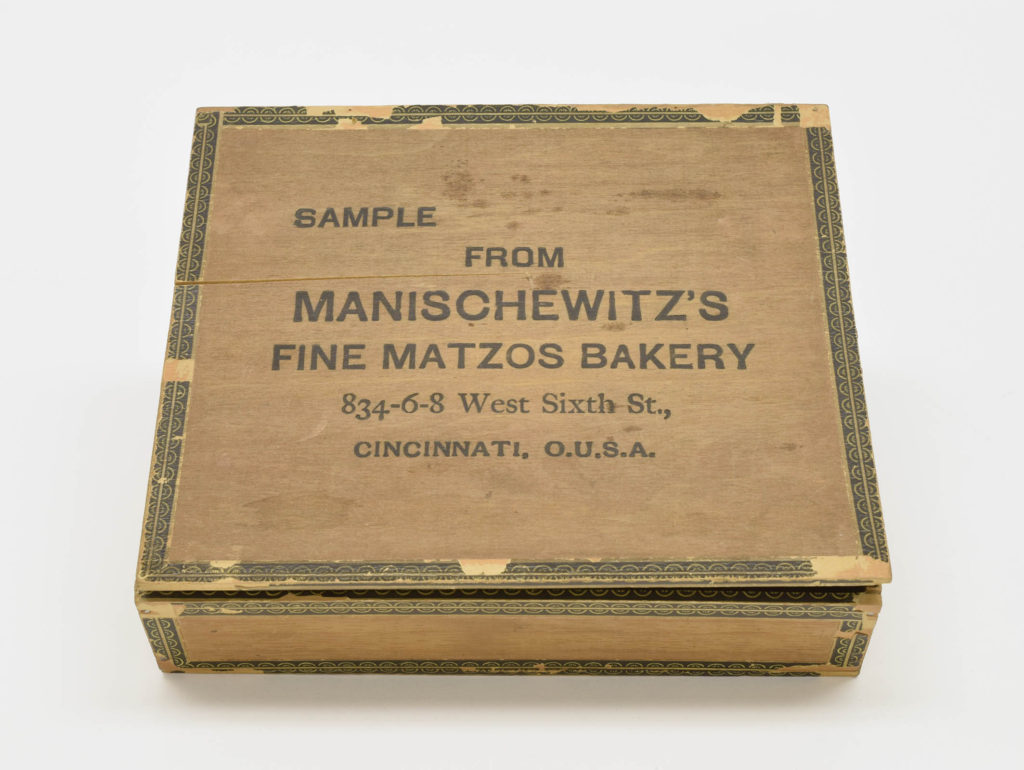Manischewitz Matzo Box
Cincinnati, Ohio, 1904
Wood
Cincinnati Skirball Museum
For most of Jewish history, matzo, the unleavened bread that is eaten during the festival of Passover, was round, made by hand, and produced locally, often in the synagogue or in a communal oven set aside for this purpose. This was also true in American during the early years of the Jewish community. But as the Jewish population increased and synagogues diversified, independent matzo bakeries assumed this task.
Dov Behr Manischewitz,(1857-1914) entered the matzo business in Cincinnati in 1888. He introduced a series of improvements that revolutionized the process of matzo baking the world over, taking it from a laborious hand-made process to mass production. Building on machines that had been developed in Europe beginning in 1838, Manischewitz yoked modern technology to the service of religion by introducing such innovations as the more easily controlled gas-fired matzo baking oven and the enormously important (and patented) “traveling carrier bake-oven,” a conveyor belt system that made it possible to automate the whole process of matzo baking. The Manischewitz Company, now located in New Jersey and no longer family-owned, originally had its headquarters in a huge factory in Price Hill, Cincinnati. Parts of the building still stand today. This early square box was itself a revolution, heralding the new square shape of mass-produced matzo. Today, the Manischewitz Company is the largest baker of matzo in the world.

